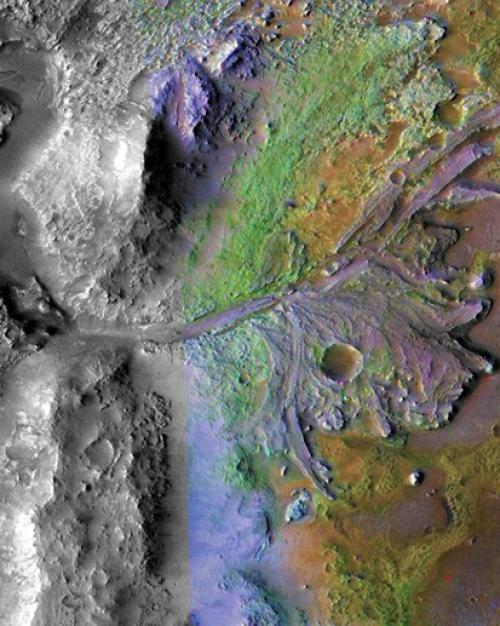NASA is planning to launch its latest rover destined for Mars on July 30, with an anticipated arrival date on the red planet in February 2021. The rover, named Perseverance, will look for evidence of ancient life and collect soil and rock samples at a part of Mars just north of its equator known as Jezero Crater — the site of an ancient river.
As part of the mission, Cornell University scientists are working on a number of aspects critical to its success, from stereo cameras, to weather instrumentation, to ground penetrating radar.
Alex Hayes is a professor of astronomy at Cornell University and a co-investigator for Perseverance’s Mastcam-Z — a set of stereo cameras that will be the “eyes of the rover.” Hayes says one of his team’s goals is to learn about the material around Jezero Crater to piece together a geological history of the area:
“The Mastcam-Z are the stereo cameras that are the eyes of the rover, and those cameras are the first zoom cameras that will ever be sent to another world. They are stereo, zoom capable, focusable, multi-spectral cameras with filter wheels — and their primary objective is to obtain images of the landing site, create 3D models of the landing site and do so in multiple wavelength spans to tell us something about the composition of the material around Jezero Crater.
“My role on the Mastcam-Z team as a scientist is to look at the geomorphology of the surrounding terrain, looking at how the rocks and sedimentary layers are interacting with each other and what their compositions are to try and discern what the environment was like when those materials were deposited.”
Don Banfield is a research scientist at Cornell and part of Perseverance’s atmospheric science team. Banfield is also science lead for the meteorological sensors on InSight — a lander currently on Mars. He says Perseverance’s ability to measure Martian weather will add important data and create a suite of weather stations on the red planet:
"We’ll actually have InSight, Perseverance and Curiosity operating at the same time on Mars. While they are all quite distant from one another on Mars, comparing the 'weather' results from all of them will likely prove interesting, similar to how one can learn from looking at the weather in Miami, New York, and Tokyo at the same time on Earth."
For media inquiries, contact Linda Glaser, news & media relations manager, lbg37@cornell.edu, 607-255-8942






